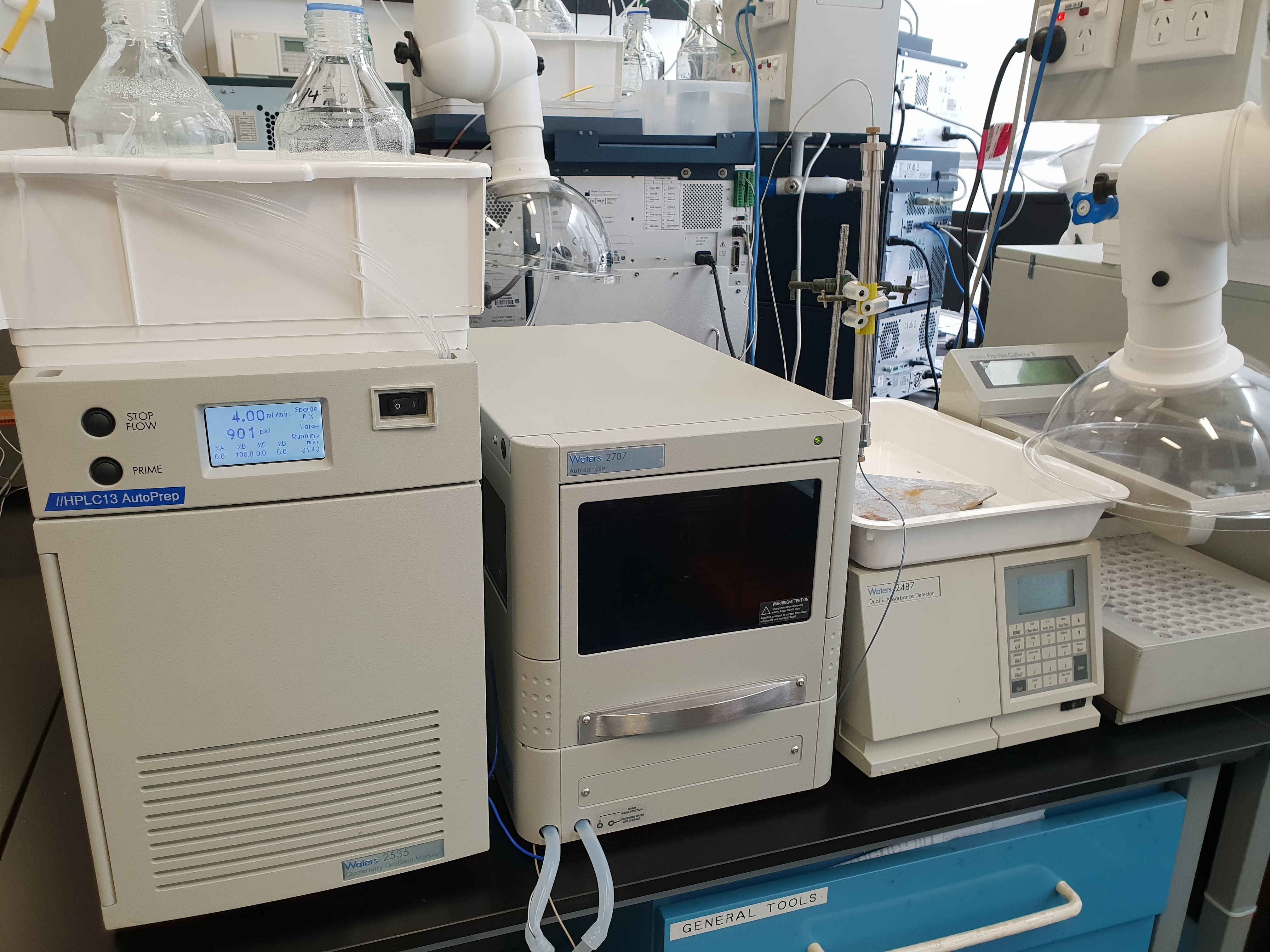Our chemistry facilities provide support and instrumentation for a wide range of research projects.
The Mass Spectrometry Facility in the School of Chemistry provides analytical services for researchers within the school, other researchers at the University of Sydney, as well as users outside the University.
There are six mass spectrometers in the Facility and low resolution and high-resolution spectra can be obtained by most ionisation techniques. Two instruments are jointly administered with other departments.
Bookings for the Facility (including requests for training to run samples yourself) can be made through the online booking system (internal access only, requires VPN access) or by contacting Dr Nick Proschogo.
The separations facility provides chromatography support and instrumentation for a wide range of research projects. We also offer technical and analytical consulting services as well.
Bookings for the Facility for University of Sydney staff or students can be made through the online booking system (VPN access required) or by contacting Dr Cody Szczepina.

The primary role of the Thermophysical Properties Facility (TPF) is to provide research support to School of Chemistry staff and students. TPF services are also available to external clients.
The TPF operates a number of specialist instruments capable of measuring diverse physical properties over a large range of temperatures including Magnetic Susceptibility, Heat Capacity, Electrical Resistivity, ThermoGravimetric Analysis (TGA), Differential Scanning Calorimetry (DSC) and Isothermal Titration Calorimetry.
TPF staff provide a range of consulting services, technical assistance and training. Samples can be submitted for a range of magnetic or calorimetric measurements.
Bookings for the Facility for University of Sydney staff or students can be made through the online booking system (VPN access required) or by emailing us at: chemistry.tpf@sydney.edu.au
The Quartz High Performance Computing Facility (Quartz HPC) provides specialised computational resources to support the theoretical and experimental chemistry community at the School of Chemistry and other associated users
The facility provides computational resources to perform sophisticated data analysis, with further details at the Quartz HPC webpage at Quartz HPC Facility (Link requires VPN access)
Consultation about various computational and software programming methods is also available by contacting the administrator, Dr Matthew Sale.